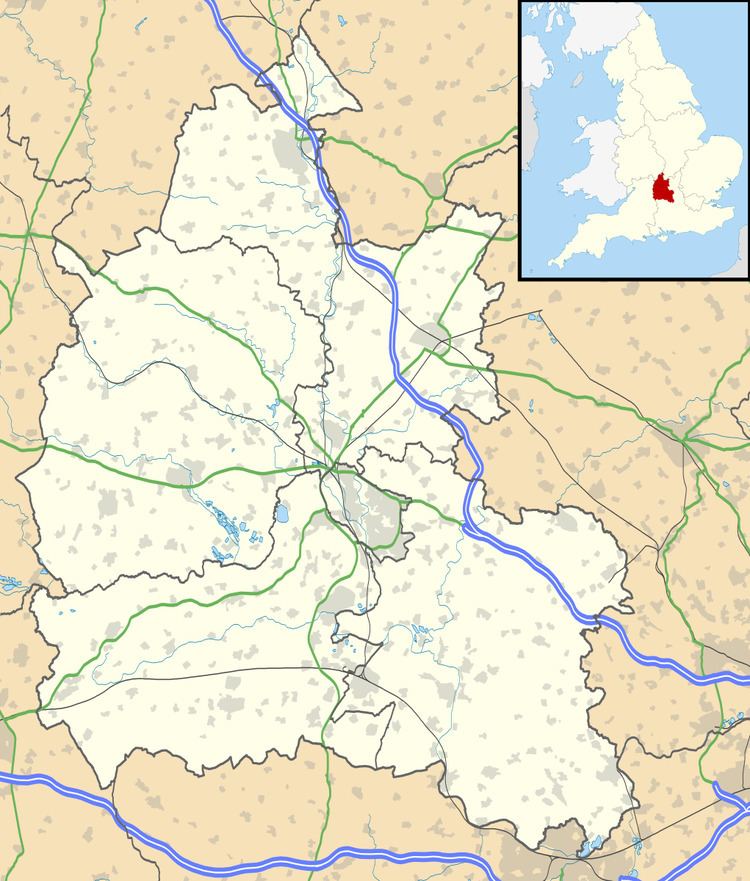Mast height 165.7 metres (544 ft) Opened 1962 | Grid reference SP567105 | |
 | ||
Built 1962 (original)1968 (current) ITV region ABC (1962-1968)ATV (1962-1981)ITV Central (1982-2006)ITV Thames Valley (2006-2009)ITV Meridian (2009-present) Similar Hannington transmitting station, Waltham transmitting station, West Kirby television relay stati, Haverfordwest transmitting station, Washford transmitting station | ||
The Oxford transmitting station (sometimes known as the Beckley transmitter) is a broadcasting and telecommunications facility, situated on land 129.5 metres (425 ft) above Ordnance Datum (mean sea level) to the north east of the city of Oxford, in Oxfordshire, England (grid reference SP567105). It has a guyed steel lattice mast which is 154.4 metres (507 ft) in height to the top of the main steel structure. Mounted above that are the UHF television antennas, contained within a GRP shroud. These antennas have an average height above Ordnance Datum of 289 metres (948 ft)., or 159.5 metres (523 ft) above ground level. The total height of the structure is 165.7 metres (544 ft). It is owned and operated by Arqiva.
Contents
- History
- May 2010 Incident
- Coverage area
- 14 September 2011 28 September 2011
- 18 April 2012 present
- References
The effective radiated power of the analogue TV transmissions was 500 kW except for Channel 5 which had an ERP of only 40 kW. This was to avoid causing co-channel interference to other transmissions in surrounding areas. In July 2007 it was confirmed by Ofcom that Oxford would be reverting to a C/D group transmitter at DSO (Digital Switchover).
History
May 2010 Incident
On 13 May 2010 the digital and analogue television transmitters (except Channel 5) went off the air at about 13:20 UTC following an incident when smoke was seen drifting from the top of the mast. The fire service reported that there had been an intense fire and that the cause was unknown. Engineering work to reinstate service began once fire crews left and the mast was made safe. Transmissions were restored via the reserve transmitter at reduced power by 20:30 UTC.
The incident occurred during testing of a new main antenna which had been installed during the previous few months in readiness for the proposed digital switchover. Investigation into the cause of the fire and the damage to the antenna may result in daytime interruptions in service. The new antenna was damaged beyond repair and a replacement was installed by the end of September 2010.
Coverage area
Television coverage is most of Oxfordshire, western Buckinghamshire, eastern Gloucestershire and northern parts of Berkshire and Wiltshire. It is sometimes called the Beckley mast, a reference to an adjacent village, or the Ot Moor mast, this referring to the area on which it is located.
From 2006, a new non-franchise regional news area ITV Thames Valley was provided from the ITV Meridian studios at Whiteley, Hampshire. This programme was replaced in February 2009, in a cost-saving reorganisation, by ITV Meridian's Meridian Tonight. However, Central Independent Television remains the licensee and broadcaster.
14 September 2011 - 28 September 2011
BBC Two closed on UHF 63 on 14 September 2011. Channel 4 temporarily moved into its frequency at the time to allow BBC A to launch on UHF 53. The remaining analogue signals ceased on 28 September.
18 April 2012 - present
Arqiva A & B and SDN increased to 50 kW on 18 April 2012, after completion of the digital switchover at Crystal Palace transmitting station.
